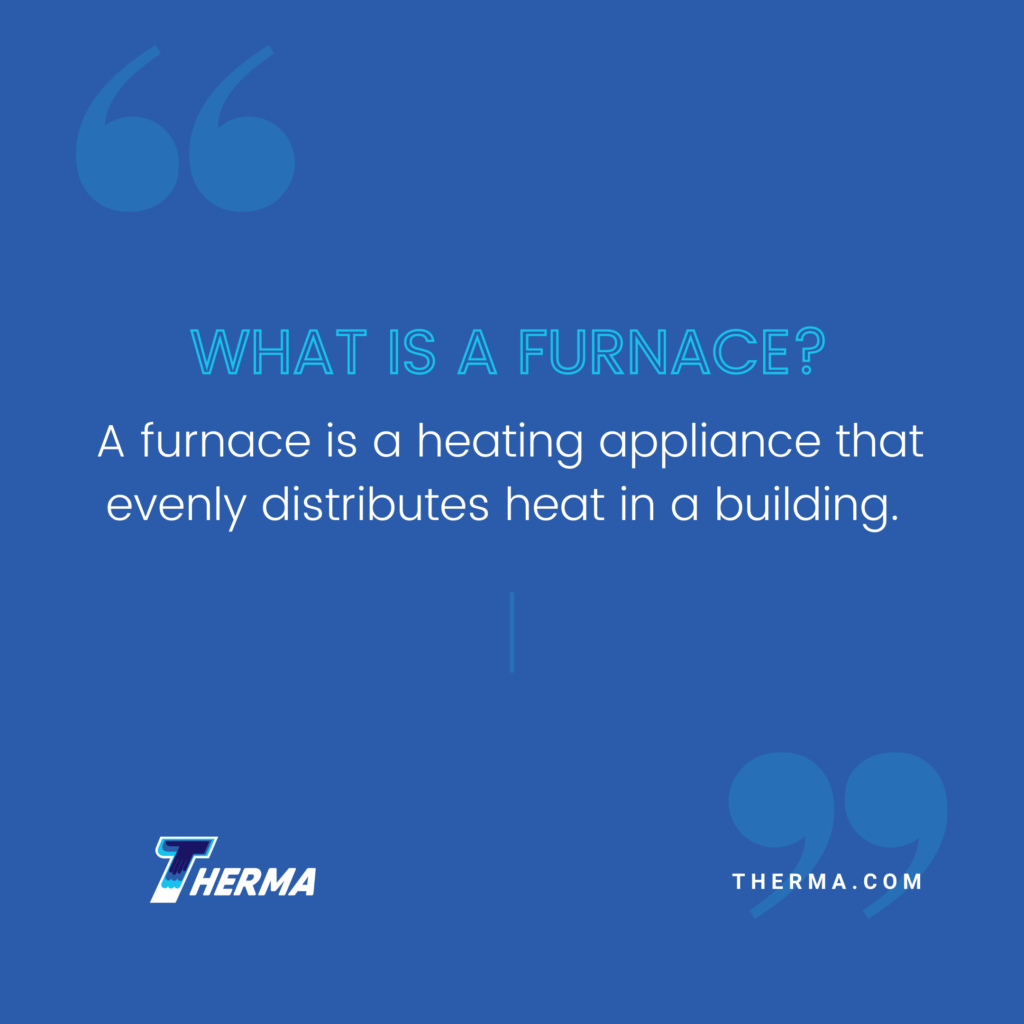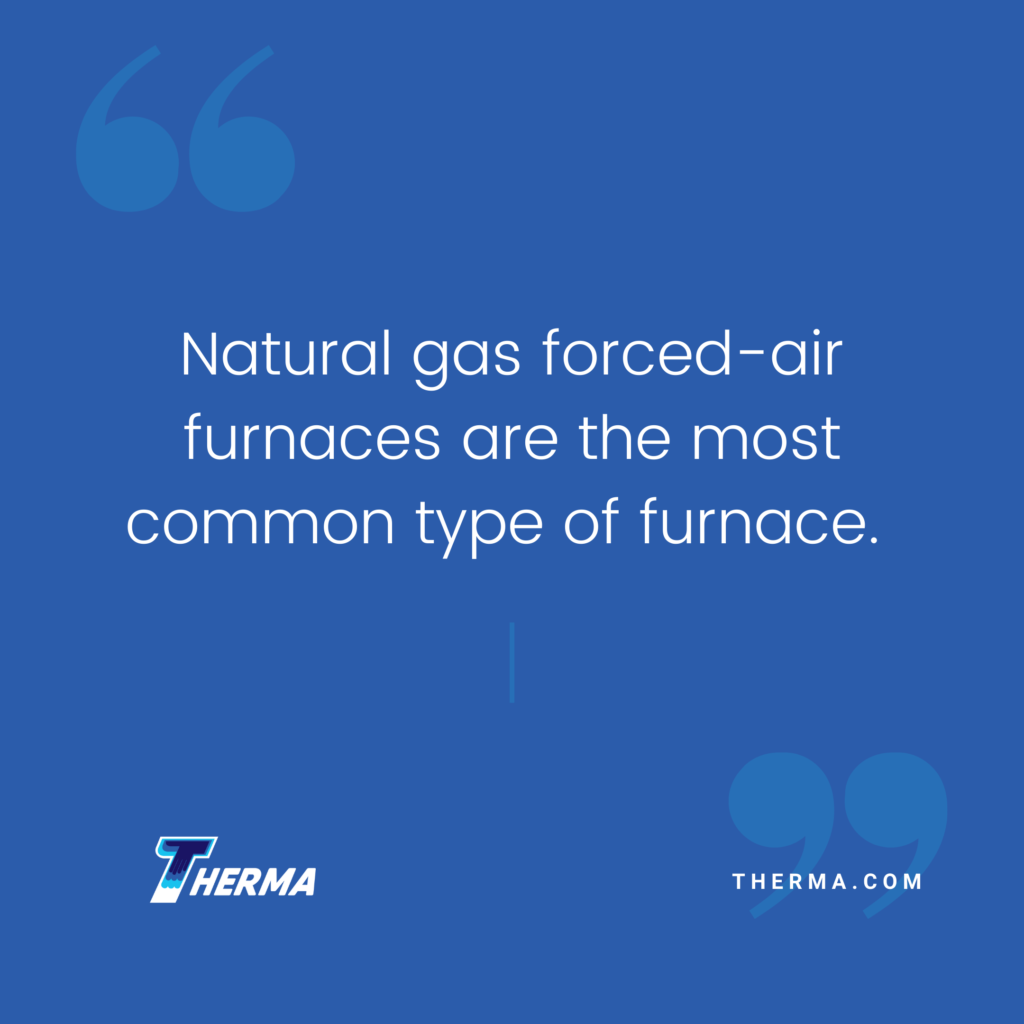by Amy Taylor
If you’re looking to buy a furnace to heat your building but aren’t sure how they work, we’ve got you covered. Learn how a gas furnace works so you’re well-informed when you need to purchase one.
What Is a Furnace?
A furnace is a heating appliance that evenly distributes heat in a building. They do this by internally burning fuel to heat up steam, water or air, and then force the warmth throughout the building to keep it at a comfortable temperature.
Almost all furnaces direct air throughout a building using a blower, which is why they are called forced-air furnaces. They can use a variety of fuels to create warmth including electricity, oil, coal, liquid propane gas or natural gas. Natural gas forced-air furnaces are the most common type of furnace. Read on to learn the parts of a gas furnace and how they work to create warmth in a building.

Parts of a Gas Furnace
Gas furnace models may differ slightly from brand to brand, but they all generally have the same parts:
- Air filter – This filter keeps the furnace free of debris and dust.
- Blower fan – This fan forces warm air from the furnace into the building.
- Burners – These outlets emit gas that the furnace ignites to create heat.
- Control board – This small circuit board interprets signals both inside and outside the furnace. The control board will respond — by performing functions like turning on the burners and blower fan — when it gets a signal from the thermostat that the building temperature has dropped.
- Exhaust pipe – This pipe allows the exhaust from combustion to safely exit the building.
- Flame detector – This device helps furnaces create heat safely. If the igniter fails to light the burners, a flame detector will sense that there’s no heat and will shut off the flow of gas.
- Gas valve – This valve regulates gas pressure that enters the furnace from either a supply line of natural gas or a liquid propane gas tank.
- Heat exchanger – These metal tubes separate the combustion process from the air entering the building. Cold air blows on the outside of the heat exchanger and is warmed, then pushed into the building by the blower fan.
- Igniter – This device creates the heat needed to light the burners. The igniter creates a spark — or heats a surface near the burners to a high temperature — to ignite the natural gas or liquid propane gas.
- Plenum – This part of the furnace both supplies and returns air to the building. A return-air plenum carries cooler air to the furnace from rooms in the building, while the supply-air plenum sends warmed air from the furnace back into the building.
- Transformer – Even though gas furnaces use natural gas to create heat, they still need electricity to run the other components. Transformers supply electricity and regulate it for the proper voltage.

How Does a Gas Furnace Work?
How does a furnace convert natural gas or liquid propane gas into heat for your building? Let’s look at the heating process:
- The furnace’s process to create and distribute heat starts outside the building. This is where the fuel source enters the building from either a liquid propane gas storage tank or a gas supply network.
- The igniter heats up or creates a spark and ignites the burner.
- The gas from the burner creates an even, steady flame.
- Cold air from the building enters the furnace.
- The burning gas warms the cool air inside the heat exchanger.
- The furnace pipes exhaust out of the building through an exhaust pipe.
- The blower fan pushes the warm air throughout the building. The thermostats tell the system which rooms require heat.
- As the warm air circulates around the building, cold air is pulled into the return ducts and directed to the furnace where it can be heated again.
- Once the rooms have reached the temperature set on the thermostat, the system signals the furnace to turn off the gas valve so the furnace stops pushing warmed air into the building.
Need Help Heating Your Commercial Building?
If your building needs a new furnace, or your existing furnace needs service, we’re here to help! Reach out to us today for your commercial building heating needs.
Amy Taylor is a writer and editor from Fredericksburg, VA. To read more of her work visit her website.
Sources
Family Handyman – How Does a Gas Furnace Work?
Hometips.com – How a Gas Furnace Works







